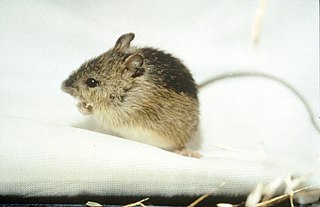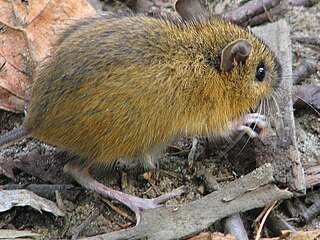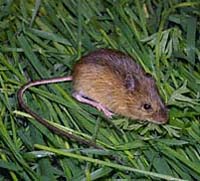
Zapodidae, the jumping mice, is a family of mouse-like rodents in North America and China.

Dipodoidea is a superfamily of rodents, also known as dipodoids, found across the Northern Hemisphere. This superfamily includes over 50 species among the 16 genera in 3 families. They include the jerboas, jumping mice, and birch mice. Different species are found in grassland, deserts, and forests. They are all capable of saltation, a feature that is most highly evolved in the desert-dwelling jerboas.

Preble's meadow jumping mouse is a subspecies of meadow jumping mouse, endemic to the upland habitats of Colorado and Wyoming in North America. It is found nowhere else in the world. It is listed as Threatened under the United States Endangered Species Act; there is a major debate about whether it is a valid taxon.

The woodland jumping mouse is a species of jumping mouse found in North America. It can jump up to 3 m (9.8 ft) using its extremely strong feet and long tail.

The meadow jumping mouse is the most widely distributed mouse in the family Zapodidae. Its range extends from the Atlantic coast in the east to the Great Plains west, and from the arctic tree lines in Canada and Alaska to the north, and Georgia, Alabama, Arizona, and New Mexico to the south. In mid-2014, the New Mexico subspecies of the meadow jumping mouse, Zapus hudsonius luteus, was listed as an endangered species under the federal Endangered Species Act.

The western jumping mouse, is a species of rodent in the family Zapodidae. It is found in Canada and the United States.

The Pacific jumping mouse is a species of rodent in the family Zapodidae. Found in Canada and the United States, its natural habitats are temperate grassland and swamps.

There are at least 50 small mammal species known to occur in Yellowstone National Park.

Listrophorus is a genus of parasitic mites in the family Listrophoridae. North American species with their hosts include:







